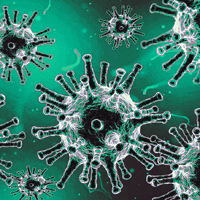Role of high dose IV vitamin C and zinc in coronavirus

Accepted: 14 January 2021
HTML: 87
All claims expressed in this article are solely those of the authors and do not necessarily represent those of their affiliated organizations, or those of the publisher, the editors and the reviewers. Any product that may be evaluated in this article or claim that may be made by its manufacturer is not guaranteed or endorsed by the publisher.
Authors
Coronavirus disease 2019 (COVID-19), caused by severe acute respiratory syndrome- related coronavirus 2 (SARS-CoV- 2), is now considered as an ongoing global pandemic. Common symptoms include pyrexia, cough, dyspnea, fatigue, sore throat, and loss of sense of taste and smell. Complications that can result from more severe insult on lung tissue is pneumonia and acute respiratory distress syndrome (ARDS), which can further lead to septic shock. It is also not uncommon to find neurological symptoms in patients suffering from COVID-19. The primary treatment for COVID-19 is symptomatic treatment and supportive care. As there is no known vaccination and antiviral therapy for this disease, there is a desperate need to find an alternative to control and stop the spread of disease. Maintaining adequate micronutrient balance might enhance the immunity and protect from viral infections as well. Vitamin C and zinc helps in improving symptoms and shortening the duration of the common cold. Vitamin C (L-ascorbic acid) possesses pleiotropic physiological activity. High dose Vitamin C has shown to be effective against the common flu, rhinovirus, avian virus, chikungunya, Zika, ARDS, and influenza, and there is evidence that supports the protective effect of high dose IV vitamin C during sepsis-induced ARDS due to COVID-19. Zinc has a profound impact on the replication of viruses. Increasing intracellular zinc concentration along with pyrithione (zinc ionophore) has been shown to impair the replication of several RNA viruses efficiently, including poliovirus, influenza virus and several picornaviruses. A combination of zinc and can also inhibit the replication of SARS-coronavirus in cell culture.
How to Cite
PAGEPress has chosen to apply the Creative Commons Attribution NonCommercial 4.0 International License (CC BY-NC 4.0) to all manuscripts to be published.

 https://doi.org/10.4081/gc.2021.9338
https://doi.org/10.4081/gc.2021.9338



